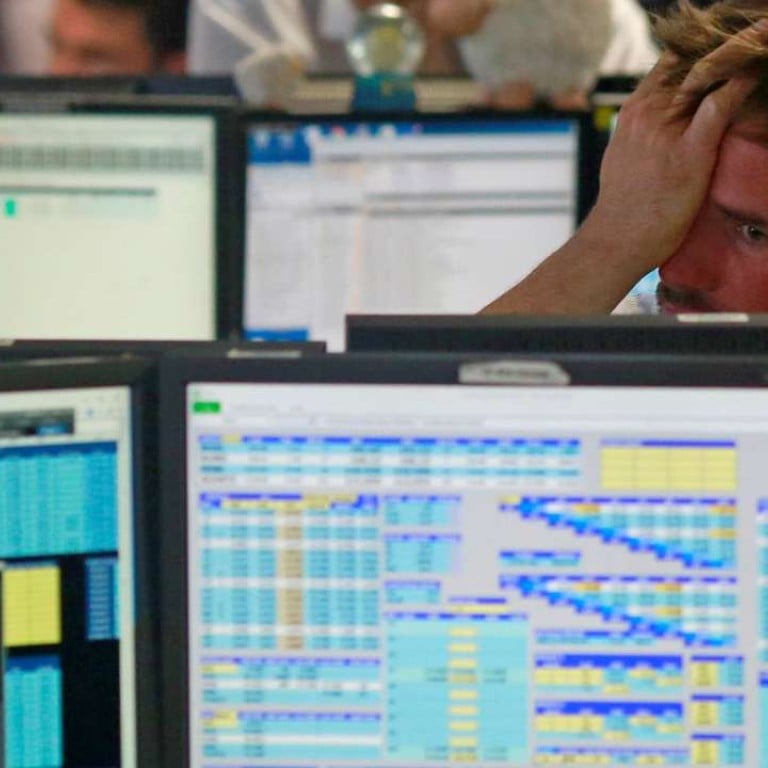
Joseph Conrad’s 1899 masterpiece offers this key to understanding market risk today
Investment professionals have had a dismal time during the past eight years, as models used to predict the future have fallen short
“It was written I should be loyal to the nightmare of my choice.” Besides the two evils that confronted his protagonist in Heart of Darkness, Joseph Conrad could have been referring to the confusion that afflicts research analysts and fund managers when they can’t make any sense of today’s markets. For the last eight years they have been wandering in a wilderness of bad decisions.
The financial industry’s faith in risk management actually encourages bankers and clients to take risks they would not otherwise take
Part of the problem is due to artificially low interest rates that have distorted the ability to price risk and asset classes since the 2008 financial crisis. The broader problem is how the financial community analyses data and information and makes decisions.
Today, we are witnessing events that are defying normal decision making models. The inexplicable rise of Trump, Brexit and the looming danger of negative interest rates in the backdrop of stubbornly slow and unsatisfying economic growth hold significant consequences for recent and future decisions.
Unfortunately, data about the future cannot be entered into models because such data doesn’t exist. So information from the past is used to drive decision making models whether they are linear or non-linear. But therein lies the analyst’s dilemma: past data from real life constitutes a sequence of events rather than a set of independent observations.

History provides us with only one sample of the events of the economy and the capital markets, not with thousands of separate and randomly distributed data. Even though many economic and financial variables fall into distribution curves, they are never perfect.
The resemblance to truth is simply not the same as truth. The wilderness of financial catastrophe is where those outliers and imperfections hide and what drives them. The science of risk management sometimes cultivates new risks even as it brings old risks under control. Indeed, senior risk managers at banks talk about how risk amorphously shifts throughout a bank’s balance sheet in sometimes unforeseen ways.
The financial industry’s faith in risk management actually encourages bankers and clients to take risks they would not otherwise take. There are benefits to risk taking- even opening a bank deposit constitutes a risk on the part of the customer and bank. One of regulators’ key lessons after the 2008 crisis is to be fully aware of adding to the amount of total risk in the system.
Derivative financial instruments designed to hedge real economic events have tempted investors to transform them into speculative vehicles with exotic pay-offs. Broad diversification through derivatives allows conservative investors to justify higher risk exposure to risk in other areas. Wealth managers now have to explain to angry clients that diversification is not a guarantee against loss, only against losing everything at once.
Uncertainty is always present in any decision making process because there is the unknown of the future. But we are also captive to both our future and past. Patterns of the past are supposed to reveal the future. However, how do we reckon a decision that leads to a result that was not remotely contemplated- like Brexit?
A systematic analysis of the unexpected has been sought by researchers and priests for centuries. Concentrating on the inputs that entered decision making used to be the starting point. Today, computers help us understand that the decision is only the beginning. The consequences of our decisions not just the decisions themselves are more critical.
The increasing power and democratisation of computers poses its own problem. Gracefully structured charts and images are so absorbing and impressive that investors easily forget that computers only answer questions. They do not ask them. Worst of all, when investors are myopic and only want to believe their version of the truth, computer models will efficiently and objectively support their conceptual errors. At the same time, you must not reject numbers when they offer more accuracy than intuition and hunch.
Modern finance tries to replace investment confusion with quantified choice and decision. Risk is always your inescapable partner. Today risk is not feared- managing risk represents challenge, opportunity and profit. This is both a source of solutions and yet more risk.
The encompassing role of computing power in all aspects of investing, the constant struggle and relationship between facts and subjective beliefs and the growing role of derivatives, capital markets and dominance of big data altogether make the management of risk and return through the cycles of financial crisis an eternal and hazardous struggle.
Peter Guy is a financial writer and former international banker

